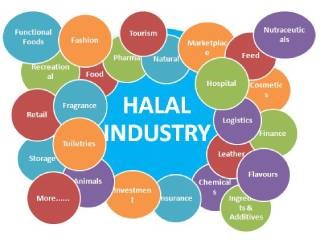UNCATEGORIZED
Ethical aspects relating to cyberspace: Copyright and privacy
Published
2 years agoon
By
Editor
Two years into our last review on state of the artt in the area of artificial intelligence, there has been a widening gap between the seeming omnipotence of neural network models based on “deep learning”, which are offered by market leaders, and the demand for an “algorithmic transparency” emanating from the society. In this review, we will try to probe this gap, discussing what trends and solutions can help resolve the problem or lead to its further exacerbation.
1. Developments of Recent Years
First of all, what we know as strong or general AI (AGI) has become a well-established item on the global agenda. A team of Russian-speaking researchers and developers has published a book on this topic, where they provide a thorough analysis of the possible prospects of this technology. Open seminars are being held on a weekly basis during the last two years by the Russian-speaking community of the AGI developers.
Consciousness. One of the key problems concerning AGI is the issue of consciousness, as was outlined in our earlier review. Controversy surrounds both the very possibility of imbuing artificial systems with it and the extent to which it would be prudent for humanity to endow such systems with “consciousness”, if possible at all. As Konstantin Anokhin has put it at the OpenTalks.AI conference in 2018, “we must explore the issue of consciousness to prevent that AI is imbued with it.” According to the materials of a round table held at the AGIRussia seminar in 2020, one of the first requirements for the emergence of consciousness in artificial systems is the ability of AI systems to carry out “multimodal” behaviour, which implies integrating information from various sensory modalities (e.g., text, image, video, sound, etc.) by “grounding” it from different modalities in the surrounding reality, enabling them to construct coherent “images of the world”—just as humans do.
Multimodality. It is here that a number of promising technological breakthroughs took place in 2021. For example, having been trained on a multimodal dataset including text–image pairs, OpenAI’s DALL-E system can now generate images of various scenes from text descriptions. In the meantime, the Codex system, which is also developed by OpenAI, has learnt to generate software code in accordance with an algorithm written in plain English.
Super-deep learning. The race for the “depth” of neural models, while has long been dominated by the American giants Google, Microsoft (jointly with OpenAI) and Amazon, is now joined by China’s tech giants Baidu, Tencent and Alibaba. In November 2021, Alibaba created the M6 multimodal network that boasts a record number of parameters or connections (10 trillion in total)—this is a mere one tenth behind the number of synapses in the human brain, as the latest data suggest.
Foundation models. Super-deep multimodal neural network models have been termed “foundation models.” Their potential capabilities and related threats are analysed in a detailed report prepared by the world’s leading AI specialists at Stanford University. On the one hand, the further development of these models can be seen as the closest achievement on the way towards AGI, with the system’s intelligence increased by virtue of an increasing number of parameters (more than in the human brain), perceived modalities (including new modalities that are inaccessible to humans) as well as huge amounts of training data (something that no individual person could ever process). The latter allows some researchers to speculate that a “super-human AI” could be built on such systems in the not-too-distant future. However, there remain some serious issues, both those raised in the report and others discussed below.
Algorithmic transparency/opacity. The further “deepening” of deep models serves to exacerbate the conflict between this approach and the requirements of the “algorithmic transparency,” which is increasingly imperative for AI-based decision-making systems as they proliferate. Limitations on the applicability of “opaque” AI in the areas that concern the security, rights, life and health of people are adopted and discussed around the world. Interestingly, such restrictions can seriously hinder the applicability of AI in contexts where it may be useful, such as in the face of the ongoing COVID-19 pandemic, where it could help solve the problem of mass diagnostics amid a mounting wave of examinations and a catastrophic shortage of skilled medical personnel.
Totally-used AI. AI algorithms and applications are becoming ubiquitous to encompass all aspects of daily lives, be it any kind of movement or financial, consumer, cultural and social activities. Global corporations and the states that exert control over them are those that control and derive benefits from this massive use of AI. As we have argued earlier, the planet’s digitally active population is divided into unequal spheres of influence between American (Google, Facebook, Microsoft, Apple, Amazon) and Chinese (Baidu, Tencent, Alibaba) corporations. Objectively, any possible manipulations on the part of these corporations and states, since they seek to maximize the profits of majority shareholders while preserving the power of the ruling elites, will only increase as the AI power at their disposal grows. It is symptomatic that OpenAI, initially intended as an open public-oriented project, has shifted to closed source, and it is now becoming all the more dependent on Microsoft in its finances.
Energy (in)efficiency. As with cryptocurrency mining, which has long been drawing criticism due to its detrimental environmental impact, power consumption of “super-deep” learning systems and the associated carbon footprint are becoming another matter of concern. In particular, the latest results of the OpenAI Codex multimodal system, developed jointly with Microsoft, touch on the environmental impact of this technology in a separate section. Given that the existing number of parameters in the largest neural network models is several orders of magnitude less than the number of synapses in the human brain, an increase in the number of such models and their parameters will lead to an exponential increase in the negative impact of such systems on the environment. The efficiency of the human brain, as it consumes immeasurably less energy for the same number of parameters, remains unattainable for existing computing architectures.
Militarization. With no significant progress in imposing an international ban on the creation of Lethal Autonomous Weapons Systems (LAWS), such systems are being employed by special services. As the successful use of attack drones has already become a decisive factor in local military conflicts, a wider use of autonomous systems in military operations may become a reality in the near future, especially that live pilots are no longer able to compete with AI systems in the simulation of real air battles. Poor ability to explain and predict the behaviour of such systems at a time of their proliferation and possible expansion into space invites no special comment. Unfortunately, aggravated strategic competition between world leaders in both the AI and arms races leaves little hope for reaching a consensus in a competitive environment, as was stated in the Aigents review back in 2020.
2. Prospects for Development
Given the insights shared earlier on, we shall briefly discuss the possible “growth zones,” including those where further development is essentially critical.
What can the “depth” reveal? As shown by expert discussions, such as the workshop with leading computational linguists from Sberbank and Google held in September 2021, “there is no intelligence there,” to quote one of the participants. The deepest neural network models are essentially high-performance and high-cost associative memory devices, albeit operating at speeds and information volumes that exceed human capabilities in a large number of applications. However, by themselves, they are failing to adapt to new environmental conditions if not tuned to them manually, and they are unable to generate new knowledge by identifying phenomena in the environment to connect them into causal models of the world, let alone share this knowledge with other constituents of the environment, be they people or other similar systems.
Can parameters be reduced to synapses? Traditionally, the power of “deep” neural models is compared to the resources of the human brain on the basis of a whole set of neural network parameters and proceeding from the assumption that each parameter corresponds to a synapse between biological neurons, as is the case of the classical graph model of the human brain connectome, reproduced using neural networks since the invention of the perceptron over 60 years ago. However, this leaves out of account the ability of dendritic arms to independently process information, or hypergraph and metagraph axon and dendrite structures, or the possibility of different neurotransmitters acting in the same synapses, or the effects associated with interference of neurotransmitters from various axons in receptive clusters. Failing to reflect if one of these factors in full means that the complexity and capacity of existing “super-deep” neural network models is removed by dozens of orders of magnitude from the actual human brain, which in turn calls into question the fitness of their architectures for the task of reproducing human intelligence “in silico”.
From “explainability” to interpretability. Although the developments in Explainable AI technologies make it possible to “close” legal problems in cases related to the protection of civil rights, allowing companies to generate rather satisfactory “explanations” in cases stipulated by law, in general the problem cannot be considered solved. It is still an open question whether it is possible to “interpret” trained models before putting them to use, in order to avoid situations where belated “explanations” can no longer bring back human lives. In this regard, the development of hybrid neuro-symbolic architectures, “vertical” and “horizontal,” appears promising. Vertical neuro-symbolic architecture involves artificial neural networks at the “lower levels” for low-level processing of input signals (for example, audio and video) while using “symbolic” systems based on probabilistic logic (Evgenii Vityaev, Discovery, and Ben Goetzel, OpenCog) or non-axiomatic logic (Pei Wang, NARS) for high-level processing of behavioural patterns and decision-making. Horizontal neuro-symbolic architecture implies the possibility of representing the same knowledge either in a neural network, implementing an intuitive approach (what Daniel Kahneman calls System 1) or in a logical system (System 2) operating on the basis of the abovementioned probabilistic or non-axiomatic logic. With this, it is assumed that “models,” implicitly learned and implicitly applied in the former system, can be transformed into “knowledge,” explicitly deduced and analysed in the latter, and both systems can act independently on an adversarial basis, sharing their “experience” with each other in the process of continuous learning.
Can ethics be formalized? As the ethics of applying AI in various fields are increasingly discussed at the governmental and intergovernmental levels, it is becoming apparent that there are certain national peculiarities in the related legislation, first of all in the United States, the European Union, China, Russia and India. Research shows significant differences in the intuitive understanding of ethics by people belonging to different cultures. Asimov’s Three Laws of Robotics seem particularly useless as in critical situations people have to choose whether (and how) their action or inaction will cause harm to some in favour of others. If AI systems continue to be applied (as they are in transport) in fields where automated decisions lead to the death and injury of some in favour of others, it is inevitable that legislation will develop in relation to such systems, reflecting different ethical norms across countries, and AI developers working in international markets will have to adapt to local laws in the field of AI ethics, which is exactly what is now happening with personal data processing, where IT companies have to adapt to the legislation of each individual country.
3. Further Steps
From a humanitarian perspective, it seems necessary to intensify cooperation between the states leading in AI and arms races (Russia, the United States and China) within the UN framework in order to effect a complete ban on the development, deployment and use of Lethal Autonomous Weapon Systems (LAWS).
When entering international markets, developers of universal general AI systems will have to ensure that their AI decision-making systems can be pre-configured to account for the ethical norms and cultural patterns of the target markets, which could be done, for example, by embedding “core values” of the target market, building on the fundamental layer of the “knowledge graph,” when implementing systems based on “interpretable AI.”
Russia cannot hope to aspire for global leadership with its current lag in the development and deployment of “super-deep” neural network models. The country needs to close the gap on the leaders (the United States and China) by bringing its own software developments to the table, as well as its own computing equipment and data for training AI models.
However, keeping in mind the above-identified fundamental problems, limitations and opportunities, there may still be some potential for a breakthrough in the field of interpretable AI and hybrid neuro-symbolic architectures, where Russia’s mathematical school still emerges as a leader, which has been demonstrated by the Springer prize granted to a group of researchers from Novosibirsk for best cognitive architecture at the AGI 2020 International Conference on Artificial General Intelligence. In terms of practical applicability, this area is somewhat in a state similar to that of deep neural network models some 10–15 years ago; however, any delay in its practical development can lead to a strategic lag.
Finally, an additional opportunity to dive into the problems and solutions in the field of strong or general AI will be presented to participants in the AGI 2022 conference, which is expected to take place in St. Petersburg next year and which certainly deserves the attention of all those interested in this topic.
From our partner RIAC
Related
You may like
-


WEF and UN-Habitat Join Forces to Unlock Critical Investment in Cities through Public-Private Collaboration
-


5 ways countries can adapt to the climate crisis
-


The Development of Artificial Intelligence in China: Conclusions
-


Four ways the planetary crisis is impacting mental health
-


New European Bauhaus under Cohesion Policy: €50 million call for innovative projects in cities
-


The Development of Artificial Intelligence in China: Investment and attention to production
UNCATEGORIZED
7 Trends Reshaping a USD 3.9 Trillion Global Halal Industry
Published
5 months agoon
January 2, 2024By
Editor
The Global Halal Market (GHM) is not just growing, it’s exploding. Driven by a surging Muslim population, rising disposable incomes, and shifting consumer preferences, this behemoth is projected to reach a staggering USD 3.9 trillion by 2027. But what’s driving this explosive growth? Buckle up, because 2024 promises a thrilling ride fueled by cutting-edge technology, ethical consumerism, and personalized convenience. Here’s your deep dive into the 7 hottest trends reshaping the global halal landscape:
Halal Tech Revolution: Where Silicon Valley Meets Mecca
Forget clunky processes and opaque sourcing. The halal industry is getting a tech makeover, and it’s about time. Blockchain is ensuring ethical sourcing and transparent supply chains, from farm to fork. Imagine halal meat traced back to its free-range roots, with every step documented on a tamper-proof digital ledger. Artificial intelligence is optimizing slaughterhouses, automating processes, and ensuring humane treatment of animals. Halal e-commerce platforms are booming, bringing convenience and halal-certified products to Muslim consumers worldwide. Think Amazon, but with prayer apps, virtual tours of halal farms, and even halal-compliant fintech solutions – the future of halal is digital and delicious!
Ethical Halal: Beyond Compliance, Embracing Values
Muslim consumers are no longer satisfied with just a halal label. They crave sustainability, animal welfare, and organic goodness. Expect a surge in plant-based halal options, from juicy burgers to creamy milkshakes made with innovative pea protein and lentil blends. Ethically sourced meat, raised on antibiotic-free feed and roaming in spacious pastures, will be the new gold standard. And get ready for a beauty revolution: cruelty-free cosmetics and hygiene products that adhere to Islamic principles will pamper consumers with peace of mind.
Convenience is King: Busy Lives, Halal Solutions
In today’s fast-paced world, convenience reigns supreme. The halal industry is taking note, with solutions tailor-made for busy Muslim lives. Subscription meal kits will deliver pre-portioned, halal-certified ingredients straight to doorsteps, complete with recipe cards for stress-free meal prep. Halal food delivery apps will take the guesswork out of dining out, connecting users with a curated selection of restaurants and cafes offering delicious and compliant meals. And for those special occasions, on-demand halal catering will ensure stress-free gatherings, leaving hosts free to enjoy the festivities.
Beyond Food: The Halal Universe Expands
The halal industry is shedding its “food-only” label and branching out into exciting new frontiers. Halal travel is booming, with destinations vying for Muslim tourists by offering halal amenities, prayer spaces, and culturally sensitive experiences. Imagine exploring Marrakech’s vibrant souks or unwinding on a pristine Maldives beach, all while knowing your needs are catered to. Halal cosmetics are gaining traction, with innovative brands formulating products free of alcohol, animal derivatives, and harsh chemicals. And even the pharmaceutical industry is taking notice, developing halal-compliant medications and healthcare products that align with Islamic principles.
Science & Innovation: Reimagining Halal with Cutting-Edge Tech
Research labs are not just churning out papers; they’re cooking up a futuristic halal feast. Lab-grown halal meat is no longer science fiction, with companies like Eat Just and Aleph Farms creating meat indistinguishable from its conventional counterpart, but without the ethical and environmental concerns. Plant-based alternatives are evolving beyond bland tofu, with innovative textures and flavors mimicking everything from juicy steaks to succulent lamb shanks. Get ready for halal food reimagined with cutting-edge technology, offering delicious and sustainable options for the future.
Health & Wellness: Halal Goes Holistic
Muslim consumers are prioritizing their well-being like never before. Enter functional halal foods infused with ingredients like probiotics, antioxidants, and adaptogens, designed to nourish the body and mind. Sports nutrition is another burgeoning market, with protein powders and energy bars formulated specifically for Muslim athletes seeking halal-compliant performance boosters. And for those managing chronic conditions, dietary supplements tailored to diabetes management, weight loss, or heart health will offer halal solutions for holistic well-being.
Storytelling & Branding: Building Trust, Shaping Perceptions
In a crowded marketplace, differentiating your brand is key. The halal industry is catching on, embracing compelling narratives and values-driven branding. Showcase your commitment to ethical sourcing, sustainability, and community engagement. Share inspiring stories of the farmers who raise your halal meat, the scientists developing innovative food technologies, or the communities you empower through your business practices. By building trust and aligning with consumer values, halal brands can stand out.
Embrace the Halal Revolution:2024 is not just a year on the calendar; it’s the dawn of a new era for the halal industry. By harnessing the power of technology, embracing ethical values, and catering to evolving consumer needs, halal businesses can tap into a USD 3.9 trillion market brimming with potential. So, whether you’re a food producer, travel blogger, or tech whiz, join the halal revolution. Optimize your offerings, tell your story, and connect with Muslim consumers worldwide. The future of halal is bright, and the time to act is now.
HALAL ECONOMY
Beyond Andalusia: Exploring Spain’s Islamic Heritage through Halal Tourism
Published
5 months agoon
December 24, 2023By
Editor
Spain’s evolving landscape of Muslim-friendly tourism is a testament to its rich Islamic history and its commitment to embracing diverse cultural needs. As we head into 2023, projections indicate a staggering 85 million international visitors to Spain, a 16.4% increase from the previous year, highlighting the country’s growing appeal as a global tourist destination. A significant portion of these tourists are from Muslim-majority countries, drawn to Spain’s Islamic heritage and the burgeoning availability of Halal services and tailored cultural experiences.
The Rise of Halal Tourism in Spain
Spain’s shift towards accommodating Muslim tourists is evident in the increasing number of Halal-certified establishments and services. The Spanish Halal Institute has reported a surge in businesses seeking Halal certification, a rise from 100 in 2010 to over 500 in recent years. This growth is not only a response to the rising Muslim visitor numbers but also a strategic move by Spanish businesses to tap into the lucrative Muslim market.
Muslim-friendly Services Across Spain
Beyond the traditionally popular Andalucía, other regions in Spain are adapting to the needs of Muslim tourists. Cities like Barcelona, Toledo, and Madrid now offer a range of Halal dining options, prayer facilities, and culturally sensitive services. For instance, the Mandarin Oriental in Barcelona, a Halal-certified hotel, offers amenities tailored to Muslim guests, including prayer mats and Halal food options. Similarly, the Costa del Sol Hotel in Torremolinos has trained its staff in Muslim culture and traditions, enhancing the experience for its Muslim clientele.
Cultural and Historical Tourism
Spain’s Islamic history, particularly the legacy of Al-Andalus, is a major draw for Muslim visitors. Educational initiatives like walking tours in Toledo, led by Aicha Fernández, and Madrid’s Muslim and Arab heritage tours, organized by Rafael Martínez, provide insights into Spain’s rich Islamic past. These tours are not just tourist attractions but educational experiences, offering deep dives into the historical and cultural significance of Spain’s Islamic era.
Economic Impact and Market Potential
The economic potential of Muslim-friendly tourism in Spain is immense. According to a report by the State of the Islamic Economy (2022), the global Muslim population, a significant portion of which belongs to the rising middle class, is increasingly travel-savvy and demands tailored services. This presents a lucrative opportunity for Spanish businesses in the tourism sector.
Government Initiatives and Recognition
The Spanish government’s role in promoting Muslim-friendly tourism is pivotal. Efforts like the creation of Halal tourism guides by municipalities like Málaga, which won recognition at the Halal In Travel Global Summit in Singapore, underscore the national commitment to positioning Spain as a Muslim-friendly destination.
Challenges and Opportunities
Despite the progress, challenges remain. Celia Rodríguez, a Spanish revert, notes the scarcity of Halal options in some regions and the need for better-informed services for Muslim tourists. This gap presents an opportunity for businesses to further tailor their offerings and improve communication with Muslim clients.
Global Context and Future Prospects
Globally, the trend towards Muslim-friendly tourism is gaining momentum, with countries like South Korea and Japan also emerging as popular destinations. Spain’s strategic approach to embracing and catering to the needs of Muslim tourists not only enhances its competitive edge in the global tourism market but also promotes cultural understanding and inclusivity.
UNCATEGORIZED
TB Research Shows a Good Diet can cut Infections by Nearly 50%
Published
9 months agoon
August 28, 2023By
Editor
| Tuberculosis is the single most deadly infectious killer of humankind. It claimed 1.6 million lives in 2021 alone. As the search for effective ways to fight the disease continues, the findings of new research offer hope: a good diet can cut infections by nearly 50%. Yogan Pillay and Madhukar Pai write that nutrition is a vaccine in all but name. |
For centuries, we have known that tuberculosis is a social disease. It thrives on poverty and social factors such as malnutrition, poor housing, overcrowding, unsafe work environments and stigma. Globally in 2021 an estimated 2.2 million cases of TB were attributable to undernourishment, 0.86 million to HIV infection, 0.74 million to alcohol use disorders, 0.69 million to smoking and 0.37 million to diabetes.
But knowledge about social determinants alone does not always translate into tangible action and progress. A new trial in India, called RATIONS, aimed to determine the effect of nutritional supplementation on new cases of tuberculosis in households of adults with pulmonary TB. The research found that providing food baskets to people with TB and their households could go a long way to prevent and mitigate the disease.
No easy silver bullets
The TB community has typically looked for biomedical solutions, or “silver bullets”, for a social pathology, and we are struggling to make progress. Since the COVID pandemic, TB mortality and incidence have increased globally, putting TB back on top as the single most deadly infectious killer of humankind. In 2021, 1.6 million people died of TB. In Africa, TB incidence is high (212 per 100,000 population) with a high case fatality rate because of the HIV epidemic.
Undernutrition is the most important cause of TB. This has been shown in studies in many countries, including South Africa, where researchers found poor levels of nutrition in patients admitted to a specialized TB hospital. Malnutrition refers to all forms of deficiencies in nutrition, including over-nutrition and obesity. Undernutrition refers more specifically to a deficiency of nutrients. While we know that many patients with TB have poor nutrition, the latest evidence is that undernutrition also plays a key role in TB within households.
The results of the Reducing Activation of Tuberculosis by Improvement of Nutritional Status (RATIONS) trial show that improved nutrition in family members of patients with lung TB reduced all forms of TB by nearly 40%, and infectious TB by nearly 50%.
This trial recruited 10,345 household members of 2,800 patients with lung TB.
- All TB patients received a monthly 10kg food basket (rice, pulses, milk powder, oil) and multivitamins for six months.
- In one group family members received 5kg rice and 1.5kg pulses per person per month, while the other group of family members did not get food baskets.
Food worked like a vaccine in this trial, cutting the risk of household members developing TB. Nutrition could also protect against other conditions such as anaemia, diarrhoea and respiratory infections, but these were not not the main focus of the trial. An accompanying paper, based on the results of the RATIONS trial, showed that severe undernutrition was present in nearly half of all patients.
An early weight gain in the first two months was associated with 60% lower risk of TB mortality. The other benefits were higher treatment success and better weight gain. During the six-month follow-up period, a remarkable treatment success rate of 94% was achieved.
Getting food to patients
How expensive was the intervention? The cost of a food basket was US$13 per TB patient per month and US$4 per household member per month and could be delivered, even in rural areas, using field staff. Even before the RATIONS trial, the Indian government had recognised the need for nutrition support for people with TB, and in 2018 launched “Nikshay Poshan Yojana”, a direct benefit transfer scheme. Under this scheme, each TB patient receives a financial incentive of US$6 per month for the duration of the anti-TB treatment (typically, six months for people with drug-sensitive TB).
Emerging data suggests that while the scheme improves the treatment completion rates among patients with TB in India, they often receive their payments late. There is a need to improve the efficiency and provide timely payments.
The new RATIONS trial suggests that directly providing food baskets may be another effective strategy.
Many countries, including India, have other social security programmes, including public distribution systems to provide food grains at subsidised prices. Using existing channels to provide extra food rations to people with TB, and expanding the menu to include proteins such as pulses and millets, is a strategy worth exploring. This could also have positive effects on other diseases such as diabetes.
Implications for South Africa
South Africa is one of the countries labelled by the World Health Organization as a “high TB burden country”.
What does this latest research mean for South Africa? Statistics South Africa reported that in 2021 2.6 million people had inadequate access to food and a further 1.1 million stated they had “severe” inadequate access to food. More than 683,000 children five years and younger experienced hunger.
This toxic mix requires prevention of TB by nutritional support, drugs to prevent TB infections and early diagnosis with molecular tests and treatment.
With high levels of food insecurity and undernutrition in South Africa, fuelled by the highest levels of inequality, it is critical that South Africa includes social benefits for people with TB and those in their households to reduce the prevalence of TB in the country and to meet the Sustainable Development Goals for 2030.
Regardless of how social benefits are distributed, action must be based on evidence. We need better tests, cures and vaccines for TB, but they alone cannot end the epidemic. TB patients must be provided with the social benefits that they need and deserve, as a basic human right.
Courtesy: The Conversation

Red Notice: Putin is Nearby

We are not Yet Winning, but they are Losing

HLISB Introduces BizHalal To Support SMEs in the Global Halal Market
Topics
- AGRIBUSINESS & AGRICULTURE
- BUSINESS & ECONOMY
- DIGITAL ECONOMY & TECHNOLOGY
- EDITORIAL
- ENERGY
- EVENTS & ANNOUNCEMENTS
- HALAL ECONOMY
- HEALTH & EDUCATION
- IN CASE YOU MISSED IT
- INTERNATIONAL POLITICS
- ISLAMIC FINANCE & CAPITAL MARKETS
- KNOWLEDGE CENTRE, CULTURE & INTERVIEWS
- OBITUARY
- OPINION
- PROFILE
- PUBLICATIONS
- SPECIAL FEATURES/ECONOMIC FOOTPRINTS
- SPECIAL REPORTS
- SUSTAINABILITY & CLIMATE CHANGE
- THIS WEEK'S TOP STORIES
- TRENDING
- UNCATEGORIZED
- UNITED NATIONS SDGS
Trending
-

 TRENDING11 months ago
TRENDING11 months agoAFRIEF Congratulates New Zamfara State Governor
-

 PROFILE9 months ago
PROFILE9 months agoA Salutary Tribute to General Ibrahim Badamasi Babangida: Architect of Islamic Finance in Nigeria
-

 BUSINESS & ECONOMY3 years ago
BUSINESS & ECONOMY3 years agoClimate Policy In Indonesia: An Unending Progress For The Future Generation
-

 BUSINESS & ECONOMY3 years ago
BUSINESS & ECONOMY3 years agoThe Climate Crisis is Now ‘Code Red’: We Can’t Afford to Wait Any Longer
-

 BUSINESS & ECONOMY3 years ago
BUSINESS & ECONOMY3 years agoIPCC report: ‘Code red’ for human driven global heating
-

 HALAL ECONOMY10 months ago
HALAL ECONOMY10 months agoRevolutionizing Halal Education Through Technology
-

 SPECIAL REPORTS5 months ago
SPECIAL REPORTS5 months agoRemembering Maryam Ibrahim Babangida: A Legacy of Grace, Philanthropy, and Leadership
-

 BUSINESS & ECONOMY2 years ago
BUSINESS & ECONOMY2 years agoDistributed Infrastructure: A Solution to Africa’s Urbanization

